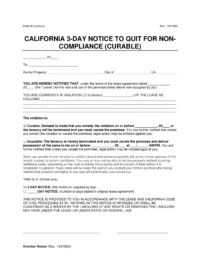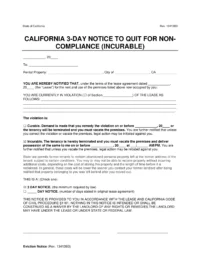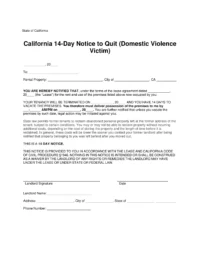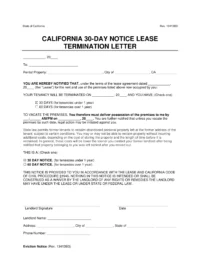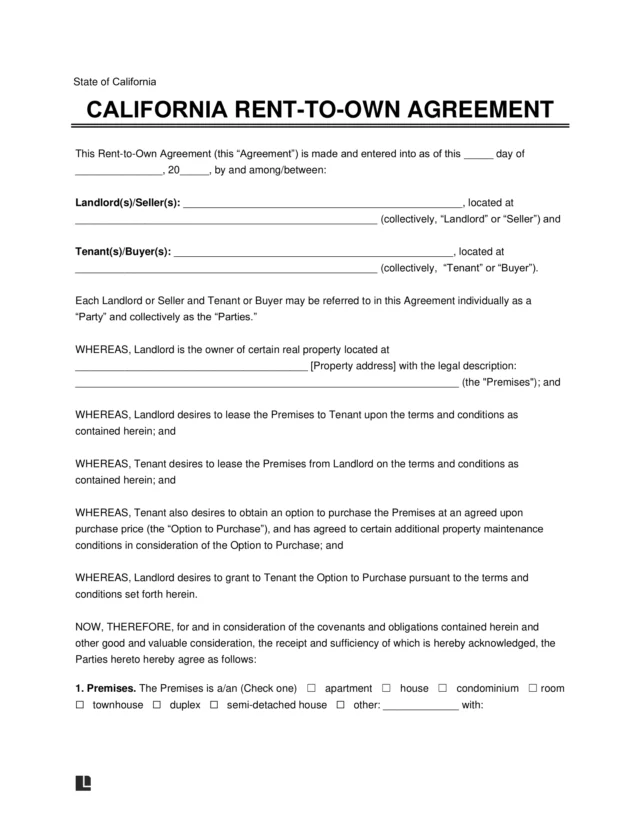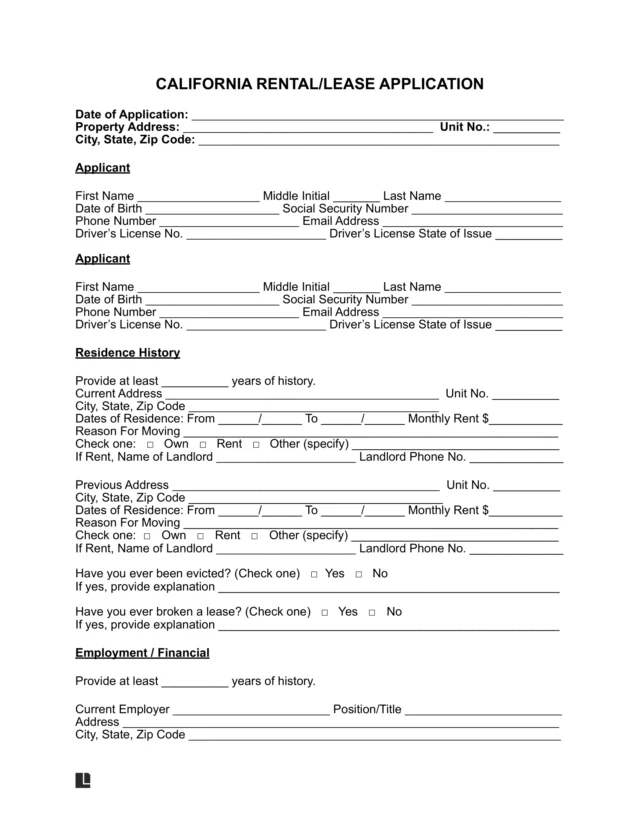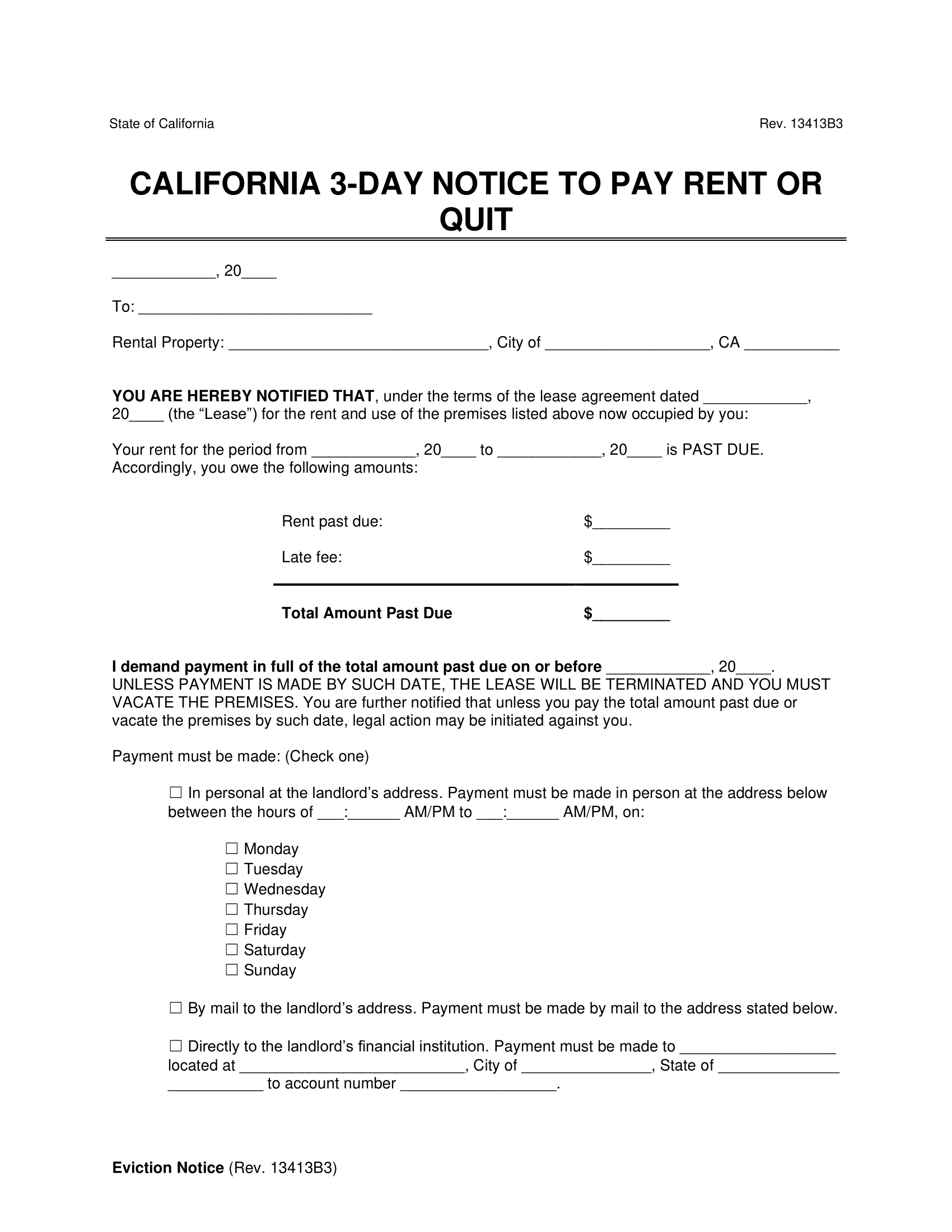Understanding Eviction Notices in California
Landlords in California must provide tenants with written notice before they can begin an eviction case. The required notice depends on the reason for terminating the tenancy and must comply with state laws, including recent updates under the Tenant Protection Act and AB 2347.
Our document builder helps landlords create a legally compliant California eviction notice. Just answer a few questions to get a customized form you can download instantly.
Types of Eviction Notices in California
California law requires landlords to use different types of eviction notices based on the lease situation and violation. The notice period and legal obligations vary depending on whether the issue is curable, at-fault, or no-fault.
3-Day Notice to Pay Rent or Quit
If a tenant hasn’t paid rent, landlords may serve a 3-day notice to pay rent or quit. This gives the tenant three court days (excluding weekends and holidays) to pay the overdue amount or vacate. Landlords must also account for any lease-provided grace period before serving, as per California Code of Civil Procedure § 1161 (2024).
3-Day Notice to Pay Rent or Quit
Gives a tenant 3 days (excluding weekends and court holidays) to pay overdue rent or move out. If they don’t, the landlord can start the eviction process.
3-Day Notice to Cure or Quit (Lease Violation)
When a tenant violates the lease, such as causing property damage or bringing in unauthorized occupants, landlords may issue a 3-day notice to cure or quit. This allows the tenant a short window to fix the violation or move out, as permitted under CA Civ Code § 1161(3).
3-Day Notice to Quit for Curable Non-Compliance
Gives a tenant 3 days (excluding weekends and court holidays) to fix a lease violation or leave. Some cities require landlords to send a cease and desist letter first.
3-Day Notice to Quit (Serious Violation)
For severe or non-curable lease violations, like illegal activity or threats to safety, landlords may serve a 3-day notice to quit. This notice doesn’t allow the tenant to correct the problem and requires them to vacate within three calendar days, as per CA Civ Code § 1161.
3-Day Notice to Quit for Incurable Non-Compliance
Requires a tenant to vacate in 3 calendar days for severe violations like illegal activity or property damage. Some cases require a prior notice to cure.
14-Day Notice to Quit (Domestic Violence Situations)
Tenants who are victims of domestic violence, abuse, or stalking may use a 14-day notice to quit to end their lease early without penalty. Landlords must accept this notice when accompanied by documentation, such as a restraining order or police report, per CA Civ Code § 1946.7.
14-Day Notice to Quit (Domestic Violence Victim)
Allows a tenant facing domestic violence, abuse, or stalking to break their lease early without penalty. Proof, such as a restraining order or police report, may be required.
30-Day Notice to Terminate Tenancy (Under 1 Year)
To end a month-to-month tenancy that’s lasted less than a year, landlords may issue a 30-day notice to terminate tenancy. Under CA Civ Code § 1946.1(c), some terminations require just cause and may trigger relocation assistance obligations under the Tenant Protection Act.
30-Day Notice to Quit (Month-to-Month Tenancy Under 1 Year)
Ends a month-to-month tenancy if the tenant has rented for less than 1 year. Some cases require just cause and relocation assistance.
60-Day Notice to Terminate Tenancy (Over 1 Year)
If the tenant has lived on the property for a year or more, landlords must provide a 60-day notice to terminate tenancy. CA Civ Code § 1946.1 requires relocation assistance or a rent waiver within 15 days for no-fault terminations covered by just cause protections.
60-Day Notice to Quit (Month-to-Month Tenancy Over 1 Year)
Ends a month-to-month tenancy if the tenant has rented for 1 year or more. Some cases require just cause and relocation assistance.
How to Evict a Tenant in California
Evictions in California must follow strict legal procedures outlined in CA Civ Code § 1159–1179a. Here are the five key steps:
1. Serve the Correct Notice
The landlord must serve the tenant with a written notice based on the reason for termination. The notice period varies: three days for unpaid rent or lease violations, 14 days for domestic violence victims, and 30 or 60 days for ending a month-to-month tenancy.
2. Wait for the Tenant’s Response
Depending on the notice type, tenants have a legally set timeframe to pay, fix the violation, or move out. If they comply, the process ends. If they do not, the landlord can file an Unlawful Detainer lawsuit.
3. File an Unlawful Detainer Lawsuit
If the tenant does not leave or correct the issue, the landlord can file an Unlawful Detainer Complaint (UD-100) in Superior Court, along with a Summons (SUM-130) and Cover Sheet (CM-010). Filing fees vary by county.
4. Serve the Court Documents
The landlord must have the court documents properly served by a registered process server or sheriff. Starting in 2025, tenants have ten court days (excluding weekends and holidays) to respond. If served by mail, they get an additional five days.
5. Obtain a Court Judgment & Enforce Eviction
If the tenant doesn’t respond, the landlord can request a default judgment by filing a Request for Entry of Default (CIV-100), Judgment for Unlawful Detainer (UD-110), and Writ of Possession (EJ-130). Once approved, the county sheriff will serve the final notice to vacate and complete the eviction. If the tenant contests the case, a hearing will be scheduled before a judge.
Eviction Laws and Requirements
California has some of the strictest eviction laws in the US, designed to protect tenants from unfair displacement. The Tenant Protection Act (TPA) of 2019 further limits rent increases and strengthens eviction protections for many renters across the state.
Just Cause Eviction Requirements
Effective April 1, 2024, CA Civ Code § 1946.2 requires landlords to have “just cause” to terminate a tenancy once a tenant has continuously and lawfully occupied the rental unit for 12 months. There are two types of just cause evictions:
- At-Fault Just Cause: The tenant has violated the lease or rental laws.
- No-Fault Just Cause: The tenant is not at fault, but the landlord has a legal reason to end the lease.
For no-fault evictions, landlords must provide relocation assistance equal to one month’s rent or waive the final month’s rent. This must be paid within 15 days of serving the eviction notice.
Grace Period and Late Fees
California does not have a state-mandated grace period for rent payments, but many lease agreements include one. If a lease provides a grace period, tenants can pay within that time without penalty.
Late fees are allowed but must be clearly stated in the lease and reasonable. Typically, landlords charge 5-10% of the rent to cover the inconvenience of a late payment. However, excessive fees, such as 20% or more, may not hold up in court, as they could be seen as unfair.
Eviction Lawsuits and Court Process
If a tenant does not comply with an eviction notice, the landlord may file an Unlawful Detainer case in Superior Court. Starting in 2025 under AB 2347, tenants now have 10 court days (excluding weekends and holidays) to respond, instead of the previous 5-day window. If served by mail, they receive an additional 5 days to reply, giving them more time to prepare their case.
Court procedures for demurrers and motions to strike have also changed. Hearings must now be scheduled within 5-7 court days of filing, with any opposition due by the court day before the hearing. These updates ensure tenants have more time while keeping the process efficient for landlords.
California Court Forms for Eviction
Filing an eviction case in Superior Court requires the right forms. Below are the most commonly used Unlawful Detainer forms in California:
- Complaint (Form UD-100): Explains the reason for eviction and must be filed at the courthouse where the rental is located.
- Cover Sheet (Form CM-010): Filed with the complaint to summarize the case details.
- Summons (Form SUM-130): Officially notifies the tenant of the lawsuit and must be served after filing.
- Proof of Service: Confirms that court documents were properly delivered to the tenant.
- Answer (Form UD-105): Allows the tenant to admit or deny the claims in the complaint.
- Request to Set Case for Trial – Unlawful Detainer (Form UD-150): Schedules a court hearing and outlines key case details.
- Request for Entry of Default (CIV-100): Used when a tenant does not respond, allowing the landlord to seek a default judgment.
- Judgment for Unlawful Detainer (UD-110): The court’s official ruling on the eviction case.
- Writ of Possession (EJ-130): If the landlord wins, this form allows the county sheriff to enforce the eviction.


